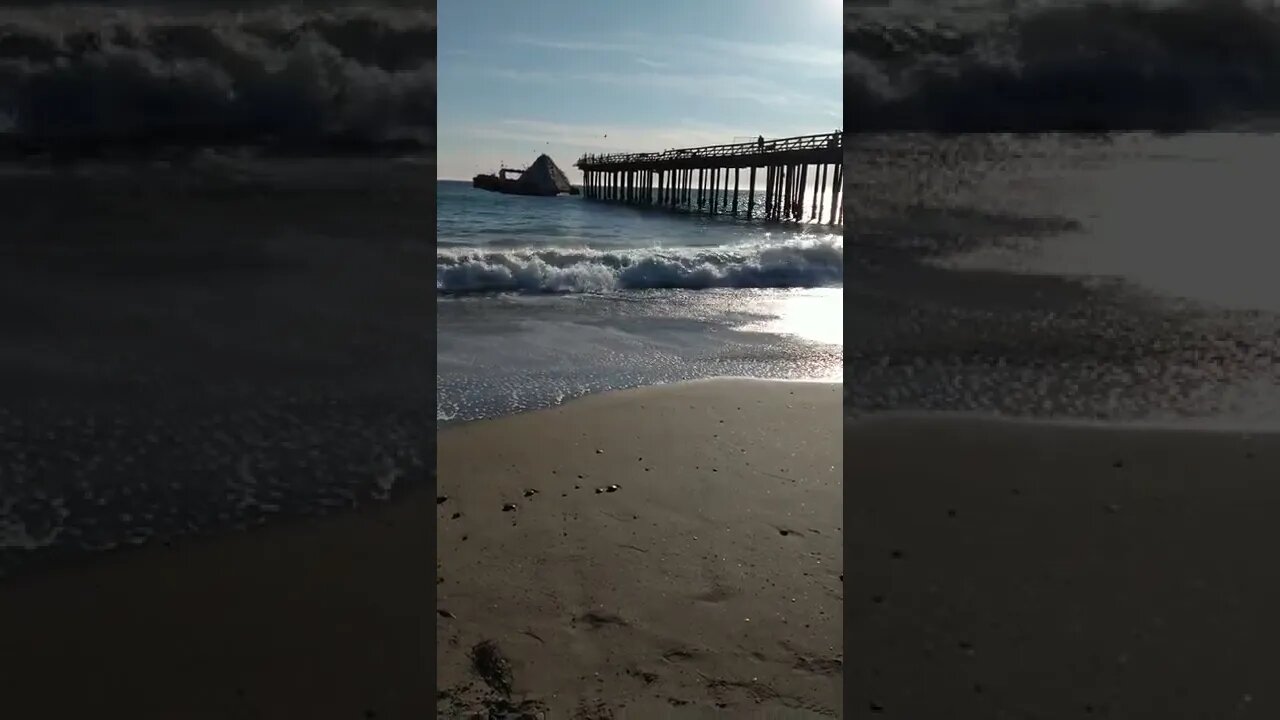Premium Only Content

cement ship SS Palo Alto history in Description
One of the most remarkable landmarks along the Santa Cruz coastline is the S. S. Palo Alto, more traditionally known as the old “cement ship”. Lodged at the end of the Seacliff State Beach fishing pier in Aptos, the ship remains a nostalgic symbol of local life and activities from the past.
Long before the waves and winter storms cracked the hull and sunk the ship into the sand, the S. S. Palo Alto was a 435-foot long, 7,500-ton oil tanker built for use during World War I. When the U.S. government commissioned new ships to replace those destroyed by German submarines, the U.S. Shipping Board Emergency Fleet Corporation built ships from reinforced concrete, using technology developed by a Norwegian civil engineer, Nicolay Knudtzon Fougner, and his brother Hermann.
In 1919, the Palo Alto was constructed along with a sister ship, the Peralta, at the U.S. Naval Shipyard in Oakland, by the San Francisco Shipbuilding Company. The cement used for building the ship’s thin concrete hull came from Davenport, and it is thought that some of the brick used in place of gravel to lighten the weight was rubble from the San Francisco earthquake. The ship was equipped with a 2,800 horsepower steam engine, a bronze propeller, white Norwegian ash decks, and 14 compartments to hold 3 million gallons of oil.
The war ended before the Palo Alto was completed, so it was sailed from the shipyard in Oakland to be anchored at Pier 33 in San Francisco in January, 1921. Concrete ships were not popular post-war, so the Palo Alto was eventually stripped of her engine and propeller, and sold to the Seacliff Amusement Corporation in 1929. In 1930, the ship was towed to Seacliff Beach by a Red Stack tugboat, where it was beached to be refitted as a pleasure ship, and the 630 ft. fishing pier was built to connect with the ship’s stern.
The Palo Alto’s renovations included a 54 by 154 ft. dance floor, a 54 ft. heated swimming pool, a café, and carnival type concessions. In the summer of 1930, 3,000 people attended the opening of the ship’s Rainbow Ballroom, which featured famous big bands like Paul Whiteman, Benny Goodman, and Tommy Dorsey. The ship was also a hotspot for games of chance. There were slot machines and bingo on the deck, and it’s rumored, gambling below it. As legend has it, during the Prohibition the surrounding beach was also a notorious hotspot for deliveries of illegal liquor.
After two summer seasons the owners went broke. In the following winter of 1932, the Seacliff Amusement Corporation went bankrupt and a storm cracked the ship’s hull in the middle. The ship was stripped of its valuables, and in 1936, was sold to the state for one dollar. Originally, the ship’s estimated cost was $1.5 million.
In 2001, public access onto the S. S. Palo Alto was permanently closed. Battered by the storms of 2016-17, the stern upended, endangering the structure of the pier and leading to its indefinite closure. Despite its inevitable decline, the iconic cement ship still holds historical and sentimental value for locals and has created a sanctuary for sealife and sandbar for surfers. Only time and the elements will tell how long this unique nautical relic will remain.
In spring of 2005 oil found on wildlife nearly two years earlier was traced back to the ship. A large cleanup project was started at a cost of $1.7 million. No oil is known to have spilled into the ocean. Wildlife experts think the birds came into contact with oil by diving into the cracked hull while fishing.
-
 LIVE
LIVE
freecastle
6 hours agoTAKE UP YOUR CROSS- STOP the Hate From State to State!
227 watching -
 1:11:04
1:11:04
vivafrei
3 hours agoWhat Did Bongino See? The Epstein "Privilege"! Canada Has Become a Dangerous JOKE & MORE!
90.8K63 -
 2:07:48
2:07:48
The Quartering
5 hours agoToday's Breaking News With Josie The Red Headed Libertarian, Hannah Claire & Luke Rodkowski
124K29 -
 LIVE
LIVE
Akademiks
4 hours agoDrake Tries for another #1?? Kodak vs YB still? Ksoo gets snitched on. Doechii plz stop botting
1,087 watching -
 1:23:38
1:23:38
The HotSeat
2 hours agoHate Crimes In Cincy + Hiring A White Girl Makes You A NAZI?!?!
12.4K5 -
 25:24
25:24
Stephen Gardner
2 hours ago🔥 RFK Just SHUT DOWN a DISTURBING Problem!
20.1K12 -
 LIVE
LIVE
Film Threat
7 hours agoVERSUS: SUPERMAN VS. THE FANTASTIC FOUR | Film Threat Versus
103 watching -
![[Ep 715] The Trump Way: Deals & Peace | Hate Crimes – Brutal Beat Downs | CA Homeless Money Scam](https://1a-1791.com/video/fww1/f5/s8/1/6/3/j/6/63j6y.0kob-small-Ep-715-The-Trump-Way-Deals-.jpg) LIVE
LIVE
The Nunn Report - w/ Dan Nunn
2 hours ago[Ep 715] The Trump Way: Deals & Peace | Hate Crimes – Brutal Beat Downs | CA Homeless Money Scam
194 watching -
 2:36:55
2:36:55
Nerdrotic
7 hours ago $3.21 earnedCancel Kurtzman Trek | The Fate of the Superhero Film - Nerdrotic Nooner 502
49.6K3 -
 LIVE
LIVE
Viss
5 hours ago🔴LIVE - The Tactics That Lead To Consistent Wins in PUBG!
48 watching